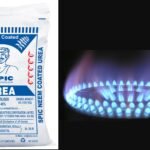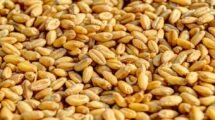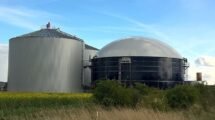India to overtake China as world’s third-largest ethanol consumer by 2026
As it accelerates the transition to a clean energy ecosystem with the goal of becoming carbon neutral by 2070, India is on track to overtake China as the world’s third-largest ethanol consumer by 2026. According to the International Energy Agency (IEA), ethanol demand in India tripled between year 2017 and 2021, with consumption estimated to reach 3 crore liters in the last calendar year.
‘By 2026, India will have surpassed China as the world’s third-largest ethanol consumer. In January 2021, India moved its 20% ethanol blending objective with gasoline from 2030 to 2025, with the goal of selling 20% blends in 2023,’ the agency stated in a report.
Also Read | Electric tractors are next vehicle to go all-electric, will be launched soon-Gadkari
According to the IEA, the country supports ethanol because it reduces oil imports, reduces air pollution, and provides economic and job prospects for farmers. Increasing ethanol demand is also consistent with the company’s net-zero strategies. In FY21, India, the world’s third-largest oil importer and user, imported petroleum products worth about Rs. 1.09 lakh crore.
Amazing progress
According to the organization, India has made ‘excellent progress’ in expanding ethanol blends. Ethanol-to-gasoline mixing rates have also grown. Blending was 2% in 2017, but by the summer of 2021, it had reached 8%, putting the country on target to attain 10% blending this calendar year.
‘In addition, India has upped its policy commitment.’ In order to meet its 20% objective, the country has set guaranteed prices per liter of ethanol-based on feedstock, established financial support for new ethanol capacity, released an ethanol roadmap, and plans to mandate flex-fuel vehicles that can run on higher ethanol mixes, according to the report.
However, the IEA stated that attaining 20% ethanol blending will present ‘major problems,’ adding that ‘vehicle compatibility, greenhouse gas (GHG) and sustainability criteria, feedstock availability, and maintaining incentives at the optimum level will all demand concerted attention. In our expedited case,’ the IEA said, ‘we assume India meets these hurdles and achieves its 20% blending objective by 2025.’
Also Read | China Farmers abandoning other crops in favour of maize due to high profit margins
A considerable portion of India’s existing vehicle fleet may be incompatible with fuel blends higher than E10. Retrofitting is an option, but the scope of the project may make it impracticable. Flex-fuel cars or vehicles that are otherwise compatible with 20% blends must be made available, and consumers must be persuaded to buy them, according to the IEA.
Clear GHG performance requirements and sustainability criteria will also aid in ensuring that ethanol production reduces emissions while minimizing other impacts. According to the IEA, India estimates that ethanol blending has decreased GHG emissions by 19 million tonnes of carbon dioxide equivalent (Mt CO2-eq) since 2014, and its ethanol roadmap emphasizes the need to augment sugarcane, a water-intensive crop, with less water-intensive feedstock.
India is presently guaranteeing fixed prices for ethanol based on the feedstock from which it is generated. It hiked incentive rates by 1-2 percent in November to promote production, it noted.
Rates that are fixed
‘The incentive structure and funding mechanism must be properly designed.’ India can also learn from other countries experiences in this area. Because of high prices, Indonesia, for example, has dialled back its biodiesel blending ambitions, a situation India would prefer to avoid. According to the agency, India may also look to other models, such as targets with credit trading, as used in the US RFS.
Also Read | ICRA predicts that global fertilizer prices will rise as China suspends exports
Currently, public sector oil marketing corporations sell 10% ethanol-blended gasoline. For the Ethanol Supply Year (December 2020-November 2021), the average ethanol blending percentage in gasoline was 8.1%. Similarly, 5% biodiesel is blended based on availability.















Add Comment